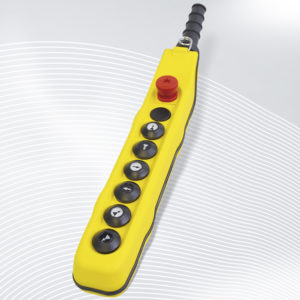With the end of 2021 rapidly approaching, we wanted to take the opportunity for this week’s blog post, to preview the predicted industry trends for 2022. At the end of this blog post, we will also review our top selling products of 2021, to inspire your upcoming projects in 2022.
Increased use of automation and robotics
Automation and robotics have been included in the trend predictions for the past year, and understandably so. Several industries, including construction, have been optimizing their production process through automation. This allows the companies to work safer and more efficiently, while satisfying the demand for remote access to operations. In 2022, we expect to continue seeing this trend, especially as many industries are still experiencing the effects of the pandemic.
Digital transformation permeating more areas of industry
As in 2021, the trends expected for 2022 would be incomplete without including digital transformation. The pandemic highlighted the significant benefits of having remote access to production sites, as many project managers were unable to physically be present. In addition, digitalization improves efficiency and productivity within the organizations as systems become accessible from anywhere. In 2022, we expect that Industrial Internet of Things (IIoT) and predictive analytics will become the baseline for businesses to remain competitive. Smart technologies are expected to further minimize production downtime to further optimize operating costs.
Changes in inventory management
Efficient inventory management in the past has meant streamlining the amount of stock kept on hand at any given moment. However, throughout the past year, the global supply chain has been plagued by delays. As a result, just-in-time inventory management has become a liability as procuring materials can be extremely difficult. Many manufacturers have started keeping a safety stock available to ensure that production can continue, despite delays. In 2022, we expect to see more advancements made in digital supply networks to ensure a more agile response to shortages.
3D printing will become even more prevalent
3D printing has steadily become more used across industries, including medicine and pharma. However, in 2022, it is expected that 3D printing will grow in demand within manufacturing and construction. This is a direct response to growing demand worldwide for affordable and cost-effective solutions. 3D printing will allow for the on-site production of components, which is an efficient and reliable solution to the supply chain problems experienced in 2021. Examples of components that could be produced in this manner including engine parts, appliances, screws, just to name a few.
Safety continues to be a top priority
With the increased focus on automation, machinery safety continues to be a top priority. We are seeing machine manufacturers continue to increase safety levels of their machines through the implementation of sensors. In addition, customers have shown increased concern for increased safety as well, highlighting the importance of the topic.
Greater focus on sustainability
In recent years, increased consumer focus has been placed on sustainability, which is reflected across industries. This has forced many companies to review or revisit their production habits, including lifetimes of products and waste. In addition, consumers are demanding greater transparency within the supply chain. With more regulations expected to enter the global markets, we can expect increased focus on environmental accountability.
B-COMMAND Product Highlight for 2022
Enabling switches

Enabling switches have become an essential part of ensuring safety in industrial plants. Their main purpose is to ensure both personal and machine damage in case of unforeseeable machine movements. Should this happen, the operator can either press the switch or release it completely, both will reliably turn off the machine. The functionality of our enabling switches is based on three positions. We have implemented a pressure point on the design side with working contacts actuated in the middle position. Enabling switches are mainly used while setting up or maintaining machines within danger zones.
Pendant stations

Pendant stations are simple and easy-to-use operating devices for direct control over machinery, industrial cranes and hoisting devices. They have become an integral part of ensuring safety within the factory environment. At B-COMMAND, we offer a number of pendant station solutions to account for the different sizes and protection degrees needed within the manufacturing environment, including an ATEX certified pendant station safe to use within explosive environments. If you have questions, or have any special requirements for an upcoming project, please don’t hesitate to reach out.
Rotary limit switches
Rotary limit switches were originally developed for limiting the end positions of overhead cranes, but are now used in a variety of applications, from manufacturing to wind energy. At B-COMMAND, we offer both a classic version of the rotary limit switch for limiting the end position of cranes, as well as a next generation of limit switches developed for use in wind energy. These switches are mainly used where the rotary motion of industrial machines must be monitored or limited. For example, it is crucial that cams used with overhead cranes are individually set to the desired positions to ensure safety of operation. In addition, a basic and slow stop function are built in to ensure increased safety. To learn more about the functionalities of this product, please visit our product page for more information.
We hope that you have found this article insightful. Do these trends correspond with what your industry is experiencing as well? Were there any trends that surprised you? We hope you all have a prosperous new year and we look forward to working together on new, exciting projects.





